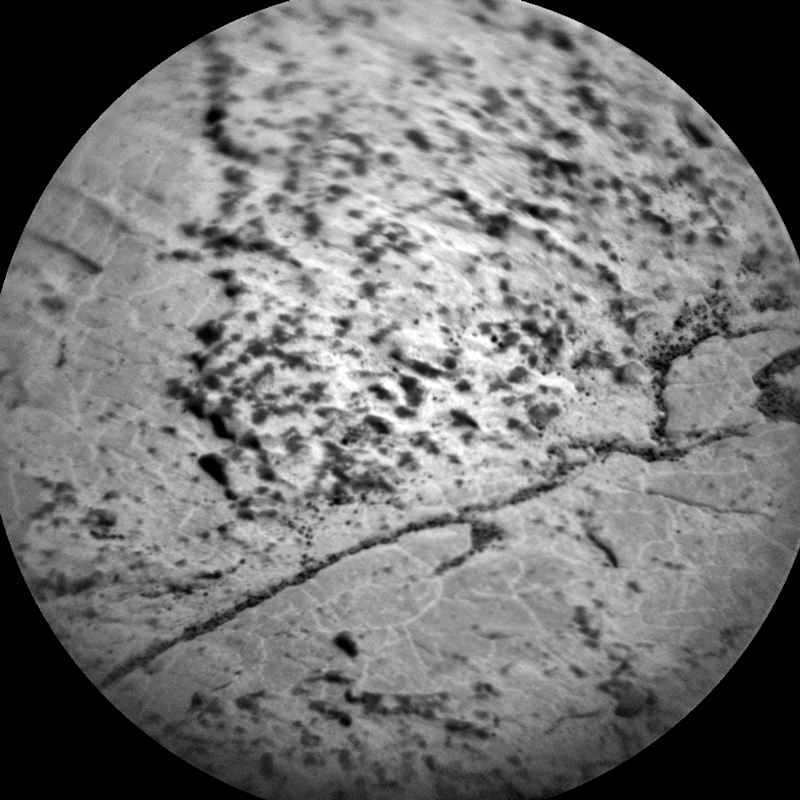2 min read

The most important activity for Curiosity on sol 2849 is an analysis of the "Mary Anning" drill sample with SAM’s gas chromatograph (GC) and quadrupole mass spectrometer (QMS). The operation of these instruments together, in what we call GCMS mode, is how we can identify the organic compounds that may be preserved in this clay-bearing outcrop. This is a big day for the Mary Anning drill campaign, and the results of the GCMS will help determine how we will continue our investigation of this site.
During extensive drill campaigns such as these, while Curiosity parked in one location for several weeks, the science team has ample time to scrutinize the rocks, pebbles and sands in the immediate vicinity of the rover. This is a luxury, because when Curiosity is driving, we usually get just a quick glimpse of the terrain in front of the rover before leaving it behind forever. Often, an instrument such as ChemCam will measure the chemistry of a rock, and by the time we have received and analyzed that chemistry data, that rock is just a speck in the rearview mirror. But during a drill campaign, when ChemCam reveals something interesting about a nearby target, we have the chance to follow up with more measurements.
So that’s exactly what ChemCam is doing today: a double take on a rock called “Ayton.” ChemCam’s first LIBS measurement of Ayton on sol 2837 targeted the small, dark nodules embedded in the rock (shown in the Remote Micro-Imager picture above). On sol 2849, ChemCam will look back at Ayton for a second LIBS observation to investigate why the chemistry is so different from its surroundings. Although Ayton is adjacent to the Mary Anning drill target, it looks completely unrelated, as Mary Anning does not have any of those dark speckles at all. It is amazing how much variability there is over such small spatial scales here – and it sure is nice to have some time to peer around and take it in!
Written by Melissa Rice, Planetary Geologist at Western Washington University







